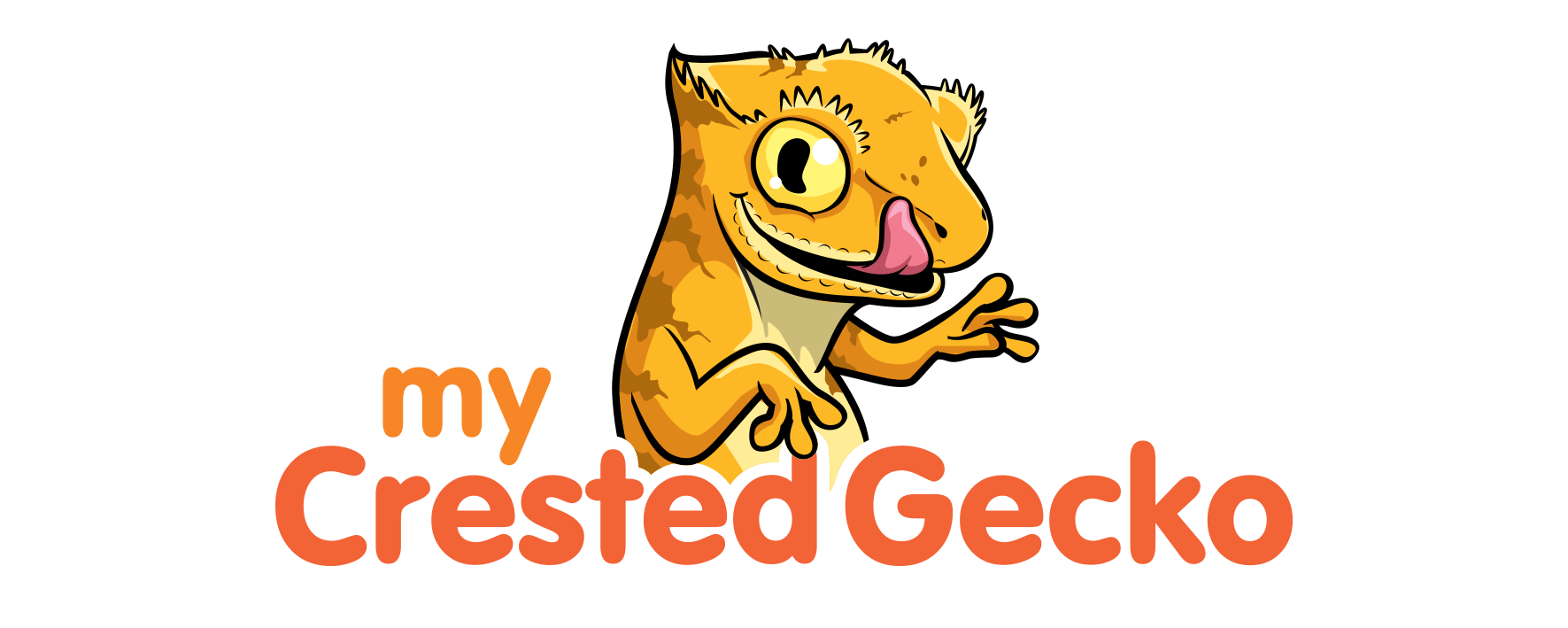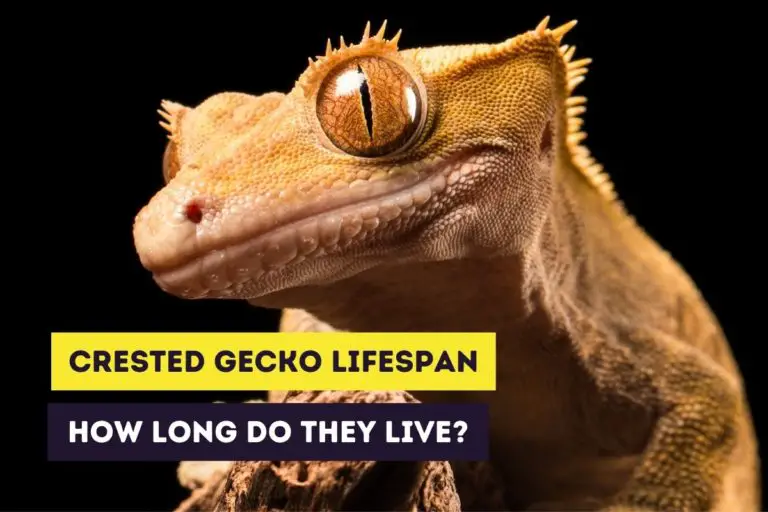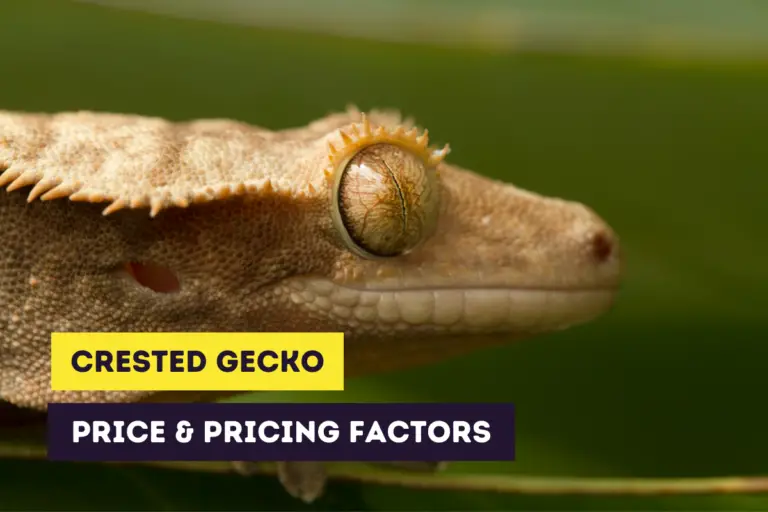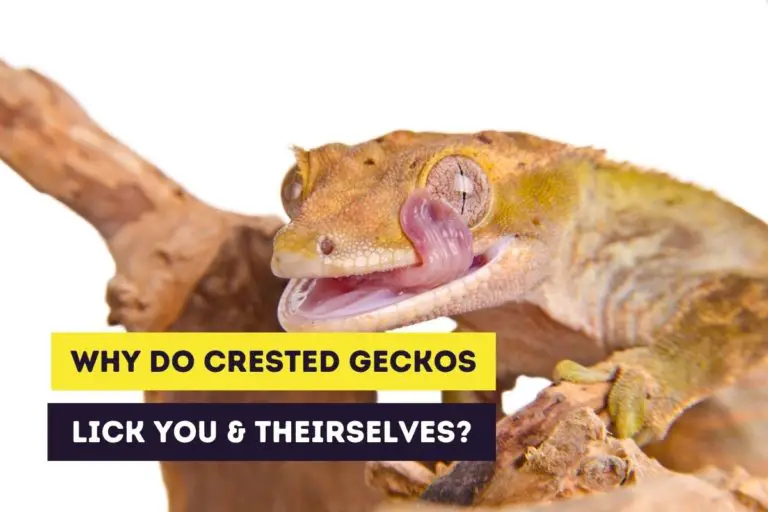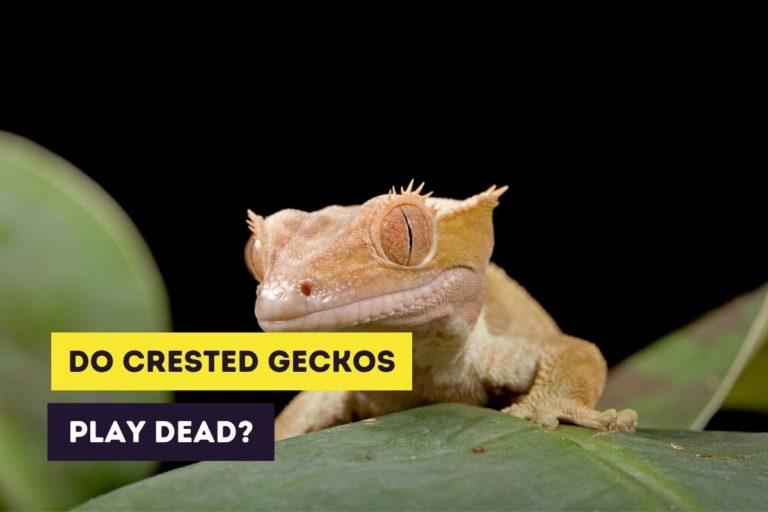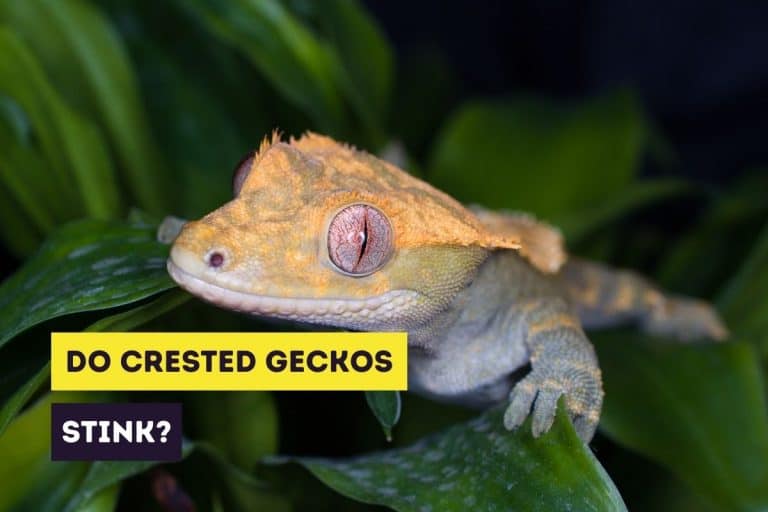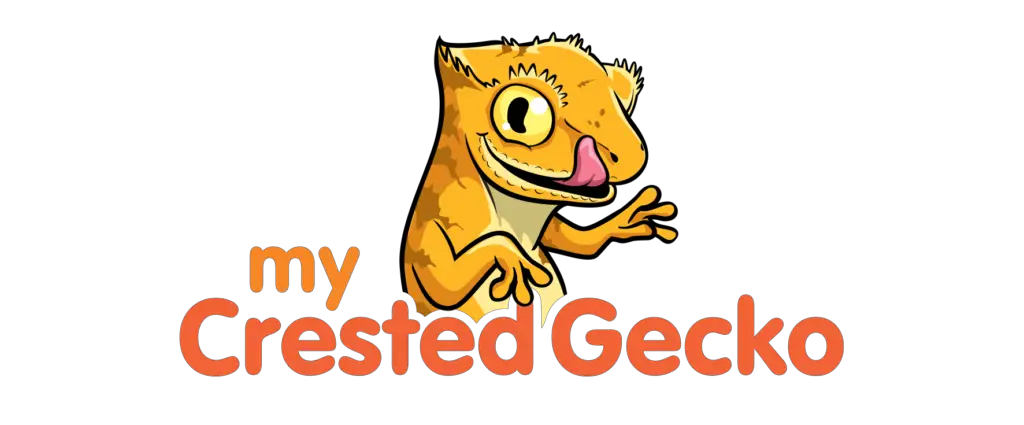Can Crested Geckos Eat Hornworms? (Feeding Instructions)
Crested geckos are omnivores that feed both on fruit and insects in the wild. The most common feeder insects given to crested geckos in captivity are crickets, mealworms, and silkworms. But what about hornworms? Are these brightly colored worms suitable for crested geckos?
Crested geckos can eat hornworms as an occasional treat once or twice a month. Hornworms contain no chitin, a lot of moisture, and low fat, making them better than most other feeder insects. Only feed (pieces of) hornworms that are small enough (not bigger than the head of your crested gecko).
Hornworms are weird-looking worms and some people might think they’re dangerous because of the little horn on their end. But they’re not dangerous at all and they’re even one of the best feeder insects you can give to your crested gecko. But this doesn’t mean that they can replace a balanced diet. You’ll still need to provide a meal replacement powder diet (or provide a self-made diet – only for those that know what they’re doing).
In this article, you’ll learn everything about one of the more forgotten feeder insects, the hornworm. In the end, you’ll know how to feed them to your crested gecko and where to buy them.
If you’re interested in stickers or other products of crested geckos, you can always visit our Etsy Shop, which is called Artful Animalia. We currently only send stickers in the United States. If you’re interested in certain crested gecko-related products, don’t hesitate to contact us.
This site contains affiliate links to products we recommend and use ourselves. We may receive a commission for purchases that you make through these links. If you’re interested in learning more about our affiliate links, please visit our (affiliate) disclaimer.
What Are Hornworms?
Tomato and tobacco hornworms are common (agricultural) pests in North America:
- the tomato hornworm is the larval stage of the five-spotted hawkmoth (Manduca quinquemaculata)
- the tobacco hornworm is the larval stage of the Carolina sphinx moth (Manduca sexta)
The tobacco hornworm isn’t only a common pest but is also bred in captivity to feed to exotic animals such as reptiles. Since tomato hornworms aren’t common as feeder insects, the rest of this article will focus on the tobacco hornworm.
Appearance
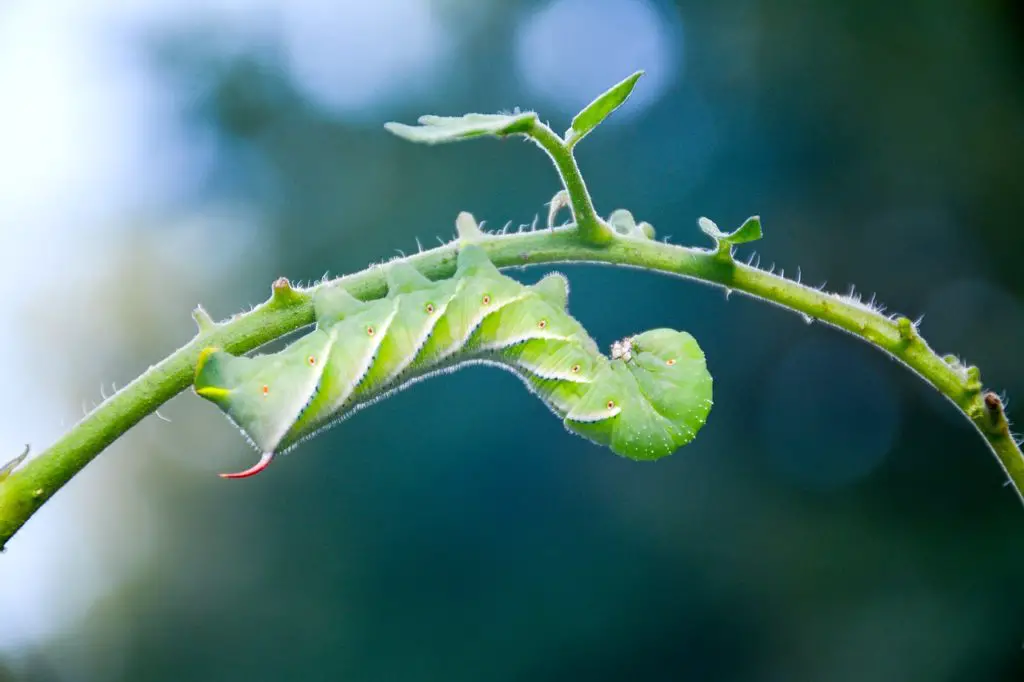
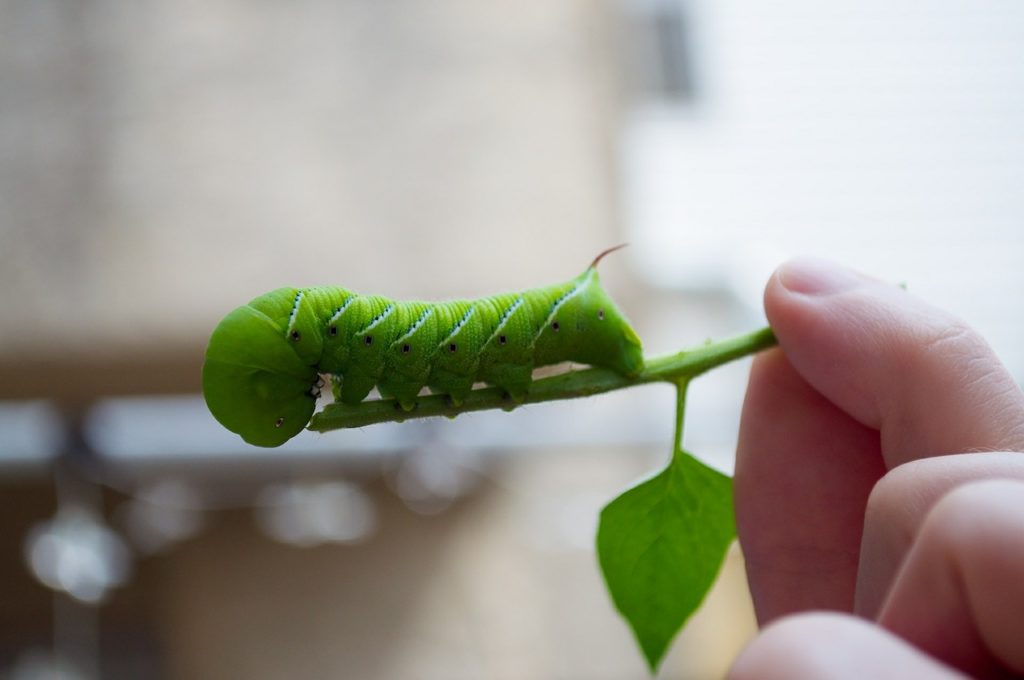
Tobacco hornworms are unique-looking feeder insects that have a bright green coloration. Along their body, there are white diagonal striped markings. On the back of the worm, there is a red “horn”, which is just a harmless piece of flesh that’s used to deter predators from grabbing and eating the worm. [1]Cranshaw W. 2004, Hornworms/Sphinx moths. Garden Insects of North America: The Ultimate Guide to Backyard Bugs. Princeton University Press, Princeton, New Jersey, USA, p. 146-149. The horn isn’t dangerous and hornworms can be handled without any problems.
Although hornworms are usually green in color, you’ll also find blue-green-colored hornworms. This coloration is caused by the diet of captive-bred hornworms, which often lacks the carotenoid xanthophyll.[2]Dahlman, D. 1969, Cuticular pigments of tobacco hornworm (Manduca sexta) larvae: Effects of diet and genetic differences, Journal of Insect Physiology, Volume 15, Issue 5, p. 807-814 … Continue reading
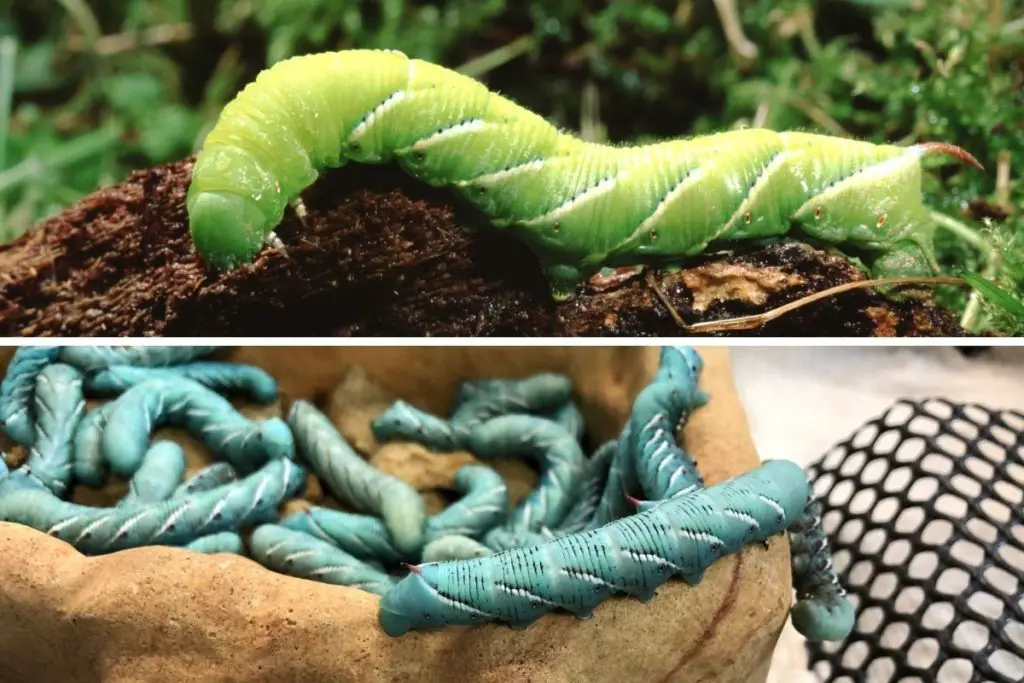
Contrary to most feeder insects, hornworms don’t have a hard exoskeleton (chitin) which makes them easier to digest. [3]See for example: https://flukerfarms.com/hornworm-care-sheet/
Life cycle
The tobacco hornworm is the larval stage of the Carolina sphinx moth. As soon as the eggs of this moth hatch the worm goes through five stages of growth. These stages are called “instar larva 1” to “instar larva 5”. After the fifth stage, the worm goes into the pupal stage before transforming into a moth.
Hornworms are notoriously known for their fast growth. They can even double in size in one day when they’re kept in a warm environment. Depending on the temperature, hornworms will go through the larval stage in two to three weeks. Hornworms can reach a length of 3 to 4 inches (7.6 to 10.2 cm) long and can weigh 10 to 12 grams.
Luckily there are ways to influence the size of the hornworm by lowering or raising the temperature. The following temperatures can be found in the Hornworm Care Sheet from Fluker Farms:
- grow faster: keep the hornworm at 82°F (27.8°C)
- slow down growth: keep the hornworm at 55°F (12.8°C)
- stop growth: keep the hornworm in a cooler at 45°F (7.2°C) for 2 days
Hornworms as a food source for crested geckos
Nutritional value
There is little nutritional information available about hornworms. The information that is available comes from websites that sell hornworms as feeders (for example Petco, Reptile Supply, Rainbow Mealworms, Josh’s Frogs, Timberline). There are slight differences in the values depending on the source but this is normal. In the following table, you can find the average nutritional value for hornworms as feeder insects.
| Components | Value (average) |
|---|---|
| Moisture | 85 % |
| Protein | 9 % |
| Fat | 3 % |
| Calcium | 46.4 mg / 100 g |
| Phosphorus | 139.4mg/ 100 g |
| Ca:P Ratio | 1:3 |
Are hornworms good for crested geckos?
Hornworms contain no chitin, which makes them easily digestible for crested geckos. They are high in moisture, low in fat, and are high in calcium. This makes hornworms an excellent feeder insect for crested geckos. The bright colors of hornworms can also make them more attractive to eat.
You should always gut-load and dust the worms to ensure that your crested gecko gets all the nutrients. Most hornworms come with the food to gut-load them. All you need to do is dust them with the usual supplements.
Are hornworms safe for crested geckos?
Wild hornworms eat plants that contain toxic alkaloids. If a crested gecko would eat a wild hornworm, it can ingest these toxins and get harmed. For this reason, you should only feed hornworms that are captive-bred and are available online or in pet stores.
Don’t be afraid of the little horn on the hornworm; it’s just to deter predators from attacking it. Neither you nor your crested gecko will get hurt by this little horn.
A while ago, there were some concerns that hornworms could cause burns when they came in contact with the skin of a crested gecko or any gecko for that matter. While doing research, I didn’t find anything recent to collaborate that hornworms can cause this. However, butterworms (another kind of worm) can cause these burns and should be avoided.
Feeding Instructions
How many hornworms can you feed to your crested gecko?
Crested geckos can eat one hornworm per serving (once or twice a month), although very hungry crested geckos might want to eat more. Depending on the size of the hornworms, you might want to feed one more to your crested gecko.
Always start with just one hornworm and learn from the experience. After a while, you’ll know how many hornworms your crested gecko can eat in one serving. I recommend giving a maximum of two hornworms per serving to prevent them from overeating and losing their appetite the following days. Hornworms contain a lot of moisture and giving too many hornworms can also cause diarrhea.
What size hornworms can you feed to your crested gecko?
Crested geckos can eat hornworms that are as big as their head. You can also use the distance between their eyes as a general rule to know if the hornworm is too big to feed to your crested gecko.
Since hornworms can grow very fast, it’s best to stick to small hornworms and slow their growth. Another option is to cut the hornworm into smaller pieces.
How often can you feed hornworms to your crested gecko?
Hornworms can be fed once or twice a month to a crested gecko as a tasty treat. Although hornworms are a better choice than mealworms and superworms, they’re not the base of a balanced crested gecko diet.
How to feed hornworms to your crested gecko?
Hornworms become pretty large, so you’ll usually be able to feed them by using a tong. You can also let your crested gecko hunt the hornworm. Lastly, you can also divide the hornworm with your hands and feed them like this.
Unlike other common feeder insects, hornworms aren’t available as a freeze-dried product. You’ll have to feed them alive (best option) or kill them yourself before feeding. If you feed them alive, make sure that they aren’t left in the terrarium for a long time (30 min or longer) or the worm might damage your terrarium plants.
Can hatchlings and juvenile crested geckos eat hornworms?
Hatchlings are too small to eat hornworms and benefit more from a well-balanced diet focused on their growth. Juvenile crested geckos can start eating hornworms once or twice a month as long as the hornworm isn’t too big.
What to do with leftover hornworms?
If your crested gecko doesn’t eat (all) hornworms you’ve fed, you’ll need to dispose of the leftover worms. The best way to do this is to place the worms in a sealed bag or container and put them in a freezer for at least 24 hours. After 24 hours, you can put them in your garbage.
Where to Buy Hornworms
Hornworms are sold online and in pet stores in the United States. If you don’t live in the United States, you may have to look a long time to find hornworms. In Europe, for example, these worms can be hard to find. Hornworms are usually sold in packs of 12 or 24 although some pet stores such as Petco and PetSmart also sell smaller packs. They are usually sold with enough food to last for several days (make sure to check this when you buy them).
Below you can find some of the more popular sellers and their prices (updated in April 2021). Be aware that there are might also be shipping costs.
| Seller | Amount | Price |
|---|---|---|
| Fluker Farms | 12 | $12.00 |
| Rainbow Mealworms | 12 | $9.50 |
| Reptile Supply | 12 | $4.50 |
| Josh’s Frogs | 12 | $16.99 |
| Petco | 12 | $14.99 |
| PetSmart | 4 | $9.99 |
| Timberline | 12 | $15.50 |
As you might notice, hornworms are more expensive than most other feeder insects (averaging $1 per hornworm). With most packs containing 12 hornworms, this will usually be too much for your crested gecko. If you own one crested gecko it might be easier to look for a small pack of hornworms in a local pet store. If you own more crested geckos, a 12-pack can be ideal.
Josh’s Frogs also has so-called habitat cups that contain 12 hornworms, a care sheet, and food to gut-load them. These cups cost a bit more because there’s free shipping included.
Want to Learn More?
If you want to learn more about crested geckos as pets, please read the following articles.
- Can crested geckos eat mealworms?
- Can crested geckos eat superworms?
- Do crested geckos need live food?
- Can crested geckos eat waxworms?
If you’re interested in getting crested geckos as pets you should also definitely read our article about baby and juvenile crested gecko care or (adult) crested gecko care.
References
| ↑1 | Cranshaw W. 2004, Hornworms/Sphinx moths. Garden Insects of North America: The Ultimate Guide to Backyard Bugs. Princeton University Press, Princeton, New Jersey, USA, p. 146-149. |
|---|---|
| ↑2 | Dahlman, D. 1969, Cuticular pigments of tobacco hornworm (Manduca sexta) larvae: Effects of diet and genetic differences, Journal of Insect Physiology, Volume 15, Issue 5, p. 807-814 (https://doi.org/10.1016/0022-1910(69)90121-8). |
| ↑3 | See for example: https://flukerfarms.com/hornworm-care-sheet/ |
